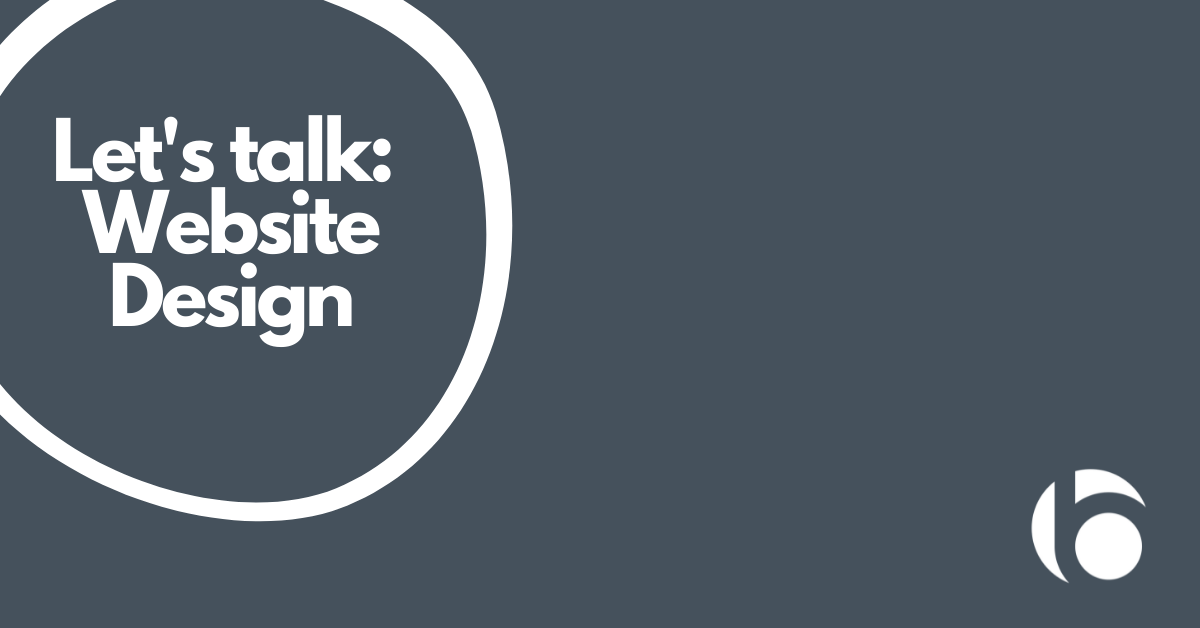Launching your website is the first step to establishing a foundational online presence, but just having a website won’t cut it when trying to gain trust with clients.
Does your site have quality content? Is the content easy to read? Is navigating from one page to the next quick and natural? Are your pages attractive and engaging?
These are key elements of good web design. Without them, it will be challenging to offer a positive user experience (UX) or cultivate the positive results you want from your site.
Why is Quality Web Design Important?
Your website is often the first contact a potential customer has with your brand. Think of it as a first impression.
People take a mere tenth of a second to form a snap judgment. That means a website needs to impress right out of the gate. If someone visits your site and has to wait for it to load, then finally arrives at something that isn’t aesthetically pleasing or simple to navigate, they’re going to see the experience as a reflection of your company and look elsewhere.
94% of first impressions on a website are based on its visuals and design. Interacting with screens is primarily a visual experience, so things like color theory, shape, textures, and dynamics are all important to the visual style of the site.
But it’s not all about looking pretty. A website should feel good to navigate, too. Menus should be simple to access and navigate, and it should be obvious what buttons lead where. Maneuvering through the site should never leave your audience lost.
With websites, the old adage, “You need to look great to play great” is all too pertinent. Your products or services may be top-notch, and the content you present on your site might be compelling, but none of that matters if the design is unattractive and offers a poor user experience.
DIY Web Design Vs. Professional Web Design
The immense demand for websites has created a balloon in the web development market. Dozens of DIY website builders scramble over each other to offer customers a simple, user-friendly content management service (CMS).
While these What You See is What You Get (WYSIWYG) solutions can make it easier to build an online website for those lacking web development skills, they also come with a myriad of limitations. Restricted customization, minimal optimization functions, transition lock, and opaque troubleshooting or maintenance guidance can leave much to be desired when it comes to giving your business the online presence you envision.
-
- Little to no customization options: There are many customization restrictions and limitations when using a base level CMS – some builders even lock their code access, making custom edits impossible even for those who know the back-end programming language. While templates can be useful, they also offer cookie-cutter designs. As a result, your site may not have the features you truly want, and will be less unique or specialized to your brand and business.
-
- Fewer search engine optimization functions: Search engine optimization (SEO) is a key aspect of a good web design. DIY website builders often leave this functionality out of their base packages, requiring additional payments to access their tools. Even if your base website builder does have a built-in SEO tool, these tools are often unreliable. SEO is not something that can be achieved by mindlessly following a tool. SEO evolves constantly, with major changes to search algorithms happening too often for any website builder’s tertiary tool to keep up on. Even the most robust SEO software requires
-
- Difficulty with moving to another platform in the future: Some DIY website builders make it difficult to transfer your content to another provider. If you’re likely to make that switch down the road, make sure to check the policies on content transfers before choosing your web builder. Sometimes, these CMS tools even own your domain, making it impossible to keep the web address you need for your business.
-
- Troubleshooting and Maintenance: Though many DIY CMS options have relatively simple user interfaces, when something goes wrong, there are no easy-to-follow, built-in troubleshooting guides to tell you what the problem is – or how to fix it. When you’re on your own with a DIY website, there’s nobody to email or call for help, and you may be waiting days, weeks, even months for replies from support teams. It can be a struggle understanding what’s gone awry in the first place, let alone knowing how to fix the issue once diagnosed.
To avoid these problems, it is important to have an experienced developer on call to conduct regular updates and maintenance. With a professional handling the back end of your website, the digital side of your business will run smoother, and be far better equipped to handle any unwanted surprises.
Trust a Full-Service Marketing Agency to Craft an Exceptional Site for Your Brand
By investing in a marketing team for professional website design, your vision for your site can come to life. You don’t have to skimp on quality, functionality, aesthetics, or maintenance. Your site will have custom-tailored design, high-quality search engine optimization, the functionality and responsiveness you need, and branded content designed with your business in mind.
At Boost Media, we help small to medium-sized businesses grow with high quality, beautifully designed websites. Learn more about Boost’s approach to web design and development, and learn more about how we handle everything from lead funnels and landing page design to square one, comprehensive website development.






